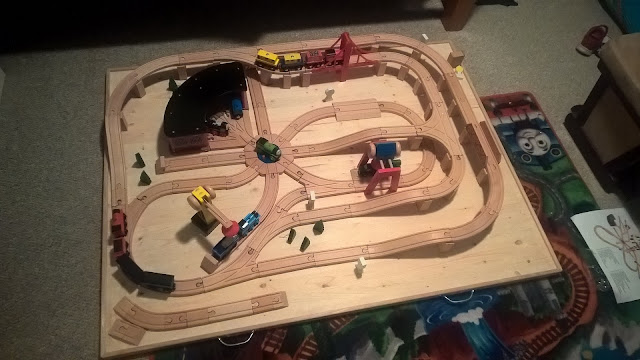Happy Holidays everyone! This year, for Christmas, I undertook my first real woodworking project- meaning one that starts with boards and ends up with something that actually feels finished. My son is nearing the magic age of three when choking hazards become less of a problem and toy franchises really start vying for his attention. In preparation for this transition, I built him a play board that could serve as a base for train sets, LEGO, car tracks or really any sort of world-building toy.
I had a couple of these when I was a kid, but they were much simpler... just single sheets of decent quality scrap wood. I wouldn't say I was excited about having them, but I recognized their invaluable utility. I wanted to provide something similar for my son, but I also felt like taking it to the next level.
A board like this can also be useful for gamers in need of a stowable play surface. The 3ft x 4ft board I built is a little too big to easily cart around, but would still be handy for those without a good playing surface.
When I was finished, I posted pics to my Facebook page and immediately started receiving comments asking for instructions on how I built it. So, here they are. If you have a little one with a penchant for building toys, a board like this will serve you well.






















